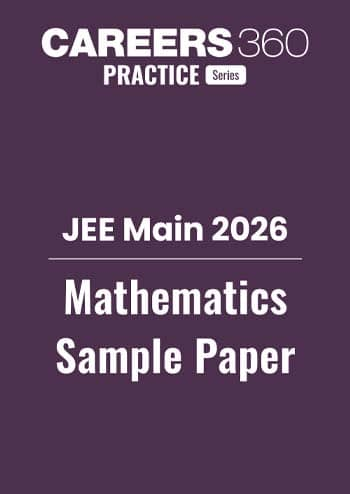Integrals of Particular Function - Practice Questions & MCQ
Quick Facts
-
Some Special Integration, Application of Special Integral Formula (Part 1) is considered one of the most asked concept.
-
51 Questions around this concept.
Solve by difficulty
$\int \frac{2^{\mathrm{x}}}{\sqrt{1-4^{\mathrm{x}}}} \mathrm{dx}$ equals
$\int \frac{x+\sin x}{1+\cos x} d x$ is equal to
$\int \mathrm{c}^2\left(\frac{1-x}{1+x^2}\right)^2 d x_{\text {is equal to }}$
Latest: Free All-India JEE Main 2026 Mock Test - Attempt Now
JEE Main Sample Papers: Physics | Chemistry | Maths | Top 30 Repeated Questions
JEE Main QP & Mock: Previous 10 Year Questions | Chapter Wise PYQs | Mock test Series
JEE Main Most Scoring Concept: January 2025 Session | April 2025 Session | Overall
Concepts Covered - 3
$\begin{aligned} & \text { 1. } \int \frac{\mathrm{dx}}{\mathrm{x}^2+\mathrm{a}^2}=\frac{1}{\mathrm{a}} \tan ^{-1}\left(\frac{\mathrm{x}}{\mathrm{a}}\right)+\mathrm{C} \\ & \text { put } \mathrm{x}=\mathrm{a} \tan \theta, \text { then } \mathrm{dx}=\mathrm{asec}^2 \theta \mathrm{~d} \theta \\ & \begin{aligned} \therefore \int \frac{\mathrm{dx}}{\mathrm{x}^2+\mathrm{a}^2} & =\int \frac{\mathrm{asec}^2 \theta}{\mathrm{a}^2+\mathrm{a}^2 \tan ^2 \theta} \mathrm{~d} \theta \\ & =\int \frac{\mathrm{asec}^2 \theta}{\mathrm{a}^2\left(1+\tan ^2 \theta\right)} \mathrm{d} \theta \\ & =\frac{1}{\mathrm{a}} \int \mathrm{d} \theta=\frac{1}{\mathrm{a}} \theta+\mathrm{C}=\frac{1}{\mathrm{a}} \tan ^{-1}\left(\frac{\mathrm{x}}{\mathrm{a}}\right)+\mathrm{C}\end{aligned}\end{aligned}$
2. $\int \frac{\mathrm{dx}}{\mathrm{x}^2-\mathrm{a}^2}=\frac{1}{2 \mathrm{a}} \log \left|\frac{\mathrm{x}-\mathrm{a}}{\mathrm{x}+\mathrm{a}}\right|+\mathrm{C}$
we can rewrite the above integral as
$
\begin{aligned}
\int \frac{d x}{x^2-a^2} & =\frac{1}{2 a} \int\left(\frac{1}{x-a}-\frac{1}{x+a}\right) d x \\
& =\frac{1}{2 a}(\log |x-a|-\log |x+a|)+c \\
& =\frac{1}{2 a} \log \left|\frac{x-a}{x+a}\right|+C
\end{aligned}
$
3. $\int \frac{d x}{a^2-x^2}=\frac{1}{2 a} \log \left|\frac{a+x}{a-x}\right|+C$
4. $\int \frac{d x}{\sqrt{\mathrm{a}^2-\mathrm{x}^2}}=\sin ^{-1}\left(\frac{\mathrm{x}}{\mathrm{a}}\right)+\mathrm{C}$
5. $\int \frac{d x}{\sqrt{a^2+x^2}}=\log \left|x+\sqrt{x^2+a^2}\right|+C$
6. $\int \frac{\mathrm{dx}}{\sqrt{\mathrm{x}^2-\mathrm{a}^2}}=\log \left|\mathrm{x}+\sqrt{\mathrm{x}^2-\mathrm{a}^2}\right|+\mathrm{C}$
7. $\int \sqrt{\mathrm{a}^2-\mathrm{x}^2} \mathrm{dx}=\frac{1}{2} \mathrm{x} \sqrt{\mathrm{a}^2-\mathrm{x}^2}+\frac{1}{2} \mathrm{a}^2 \sin ^{-1}\left(\frac{\mathrm{x}}{\mathrm{a}}\right)+\mathrm{C}$
8. $\int \sqrt{\mathrm{a}^2+\mathrm{x}^2} \mathrm{dx}=\frac{1}{2} \mathrm{x} \sqrt{\mathrm{a}^2+\mathrm{x}^2}+\frac{1}{2} \mathrm{a}^2 \log \left|\mathrm{x}+\sqrt{\mathrm{a}^2+\mathrm{x}^2}\right|+C$
9. $\int \sqrt{\mathrm{x}^2-\mathrm{a}^2} \mathrm{dx}=\frac{1}{2} \mathrm{x} \sqrt{\mathrm{x}^2-\mathrm{a}^2}-\frac{1}{2} \mathrm{a}^2 \log \left|\mathrm{x}+\sqrt{\mathrm{x}^2-\mathrm{a}^2}\right|+C$
Following are some important substitutions useful in evaluating integrals.
\begin{array}{c||c|}
\text { Expression } & \text { Substitution } \\
\hline a^2+x^2 & x=a \tan \theta \text { or } x=a \cot \theta \\
\hline a^2-x^2 & x=a \sin \theta \text { or } x=a \cos \theta \\
\hline x^2-a^2 & x=a \sec \theta \text { or } x=a \csc \theta \\
\hline \sqrt{\frac{a-x}{a+x}} \text { or } \sqrt{\frac{a+x}{a-x}} & x=a \cos 2 \theta \\
\hline
\end{array}
Integration of the type
(i) $\int \frac{(p x+q) d x}{a x^2+b x+c}$
(ii) $\int \frac{(p x+q)}{\sqrt{a x^2+b x+c}} d x$
(iii) $\int(p x+q) \sqrt{a x^2+b x+c} d x$
Express the linear factor $p x+q$ in terms of the derivative of quadratic factor $a x^2+b x+c$
i.e.
$
\begin{aligned}
\mathrm{px}+\mathrm{q} & =\lambda \cdot \frac{\mathrm{d}}{\mathrm{dx}}\left(\mathrm{ax}^2+\mathrm{bx}+\mathrm{c}\right)+\mu \\
\Rightarrow \quad \mathrm{px}+\mathrm{q} & =\lambda(2 \mathrm{ax}+\mathrm{b})+\mu
\end{aligned}
$
Find $\lambda$ and $\mu$ and replace $(p x+q)$ by $\lambda(2 a x+b)+\mu$
Integration of the type
1. $\int \frac{a x^2+b x+c}{\left(p x^2+q x+r\right)} d x$
2. $\int \frac{\left(a x^2+b x+c\right)}{\sqrt{\mathrm{px}^2+\mathrm{qx}+\mathrm{r}}} \mathrm{dx}$
3. $\int\left(\mathrm{ax}^2+\mathrm{bx}+\mathrm{c}\right) \sqrt{\mathrm{px}^2+\mathrm{qx}+\mathrm{r}} \mathrm{dx}$
Substitute,
$
\mathrm{ax}^2+\mathrm{bx}+\mathrm{c}=\lambda\left(\mathrm{px}^2+\mathrm{qx}+\mathrm{r}\right)+\mu\left\{\frac{\mathrm{d}}{\mathrm{dx}}\left(\mathrm{px}^2+\mathrm{qx}+\mathrm{r}\right)\right\}+\gamma
$
Find λ, μ, and γ. These integrations reduce to integration of three independent functions.
Integration of the form $\int \frac{\mathrm{k}(\mathrm{x})}{\mathrm{ax}^2+\mathrm{bx}+\mathrm{c}} \mathrm{dx}$
(here, k(x) is a polynomial of degree greater than 2)
To solve this type of integration, divide the numerator by the denominator and express the integral as
$\mathrm{Q}(\mathrm{x})+\frac{\mathrm{R}(\mathrm{x})}{\mathrm{ax}+\mathrm{bx}+\mathrm{c}}$
Here, R(x) is a linear function of x.
Study it with Videos
"Stay in the loop. Receive exam news, study resources, and expert advice!"















